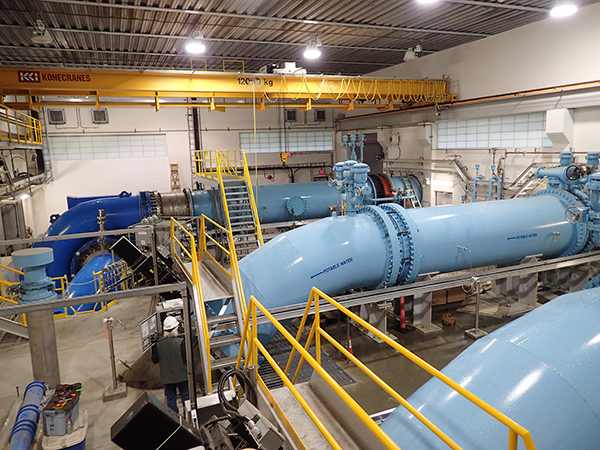
Capilano Break Head Tank and Energy Recovery Facility
Cliente
Metro VancouverUbicación
British Columbia, CanadaAspectos destacados
- Project management
- Detailed designs
- Physical modeling
- Construction tender drawings
- Equipment selection and specifications
- Site supervision
- Quality assurance and quality control
- Testing and commissioning

Project Overview
The Capilano Break Head Tank and Energy Recovery Facility is an integral part of Metro Vancouver’s Seymour-Capilano Water Filtration System, which includes two reservoirs, a pumping station, a filter and treatment plant, and twin tunnels for water transfer between facilities, to provide approximately 1.8 billion litres of filtered, potable water per day to the Greater Vancouver Regional District.
The facility is located adjacent to the Capilano Reservoir and Cleveland Dam, at the terminus of a 7-km-long, gravity-driven tunnel from the Seymour-Capilano Filtration Plant (SCFP). Excess pressure is created when treated potable water from the SCFP—located 30 m higher in elevation—passes through the tunnel for delivery to the Capilano distribution system.
Project Role
Knight Piésold designed and commissioned the facility for Metro Vancouver. The facility was designed to provide reliable water continuity and dissipate excess pressure of clean drinking water from the SCFP before it is delivered to residents and businesses in the cities of Vancouver, North Vancouver, and Burnaby. A large hydroelectric turbine with a 4.5 m diameter spiral case converts excess pressure and flow to electricity to recover energy that otherwise would have been lost. Two fully redundant 1.65 m diameter pressure reducing valves (PRVs) dissipate excess gravity-fed water pressure and provide water supply continuity, if the turbine shuts down. The turbine and PRVs discharge into a large underground concrete break head tank, connected to the city water mains, to maintain a constant water supply level in response to varying demands from consumers in the cities.
The facility includes one of the largest energy recovery turbines in a municipal treated potable water system in North America and has been shown to seamlessly maintain water supply under all anticipated failure modes. The turbine is expected to generate energy equivalent to powering up to 1,000 homes. Instead, the energy is used to partially offset the usage of the large pumps in the Capilano Pump Station, reducing Metro Vancouver’s energy consumption by approximately 9,600 MWh/year.
Awards
- Award of Excellence, Natural Resources, Mining, Industry & Energy Category, 2016 Canadian Consulting Engineering Awards
- Award of Merit, Energy & Industry Category, 2016 ACEC-BC Awards for Engineering Excellence